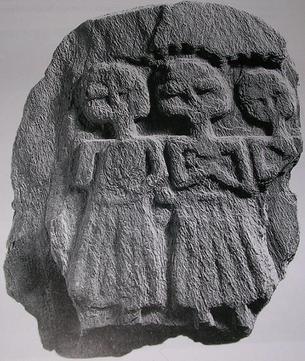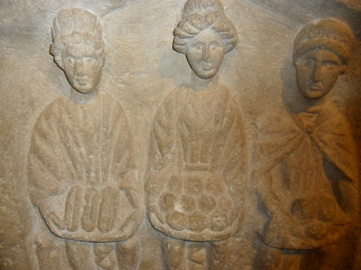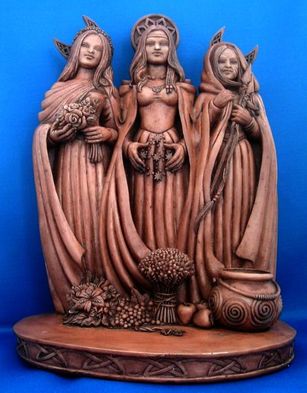British Goddesses

It is hard to truly know who or what the British Goddess is (or was). Humans relate to human-ness. Therefore, given the abstract concept of "Goddess Energy" we personify it and create beautiful and imaginative pictures of what our imagination would like "The Goddess" to be.
This is made concrete through artwork using all mediums from pencil drawings, through paint, sculpture, and ceramics to digital photographic art.
The invading Romans were no different. They used sculpture and mozaic to depic their Gods and Goddesses. They seemed to have no conflict in amalgamating their own tried and tested and true Gods and Goddesses with local Gods and Goddesses hence the double-barrel names: Sulis Minerva, Brigantia Augusta, Apollo Maponus, Mars Cocidius.
The Iron Age people tended towards worshipping a Geni Loci - a non-humanised God or Goddess energy that resided in a place. I can understand this. When visiting the waterfall Scalebar Force, the "Goddess Energy" is intense, but has not "human" form unless we imagine it so.
Perhaps the Iron Age people did, over time, personify the energy. But it was only during the Romano-British phase that their art work began to depict human images rather than express imaginative artwork through abstract pattern.
The stone relief above was created at a time when Roman artists were influencing indigenous British art.
This is made concrete through artwork using all mediums from pencil drawings, through paint, sculpture, and ceramics to digital photographic art.
The invading Romans were no different. They used sculpture and mozaic to depic their Gods and Goddesses. They seemed to have no conflict in amalgamating their own tried and tested and true Gods and Goddesses with local Gods and Goddesses hence the double-barrel names: Sulis Minerva, Brigantia Augusta, Apollo Maponus, Mars Cocidius.
The Iron Age people tended towards worshipping a Geni Loci - a non-humanised God or Goddess energy that resided in a place. I can understand this. When visiting the waterfall Scalebar Force, the "Goddess Energy" is intense, but has not "human" form unless we imagine it so.
Perhaps the Iron Age people did, over time, personify the energy. But it was only during the Romano-British phase that their art work began to depict human images rather than express imaginative artwork through abstract pattern.
The stone relief above was created at a time when Roman artists were influencing indigenous British art.



